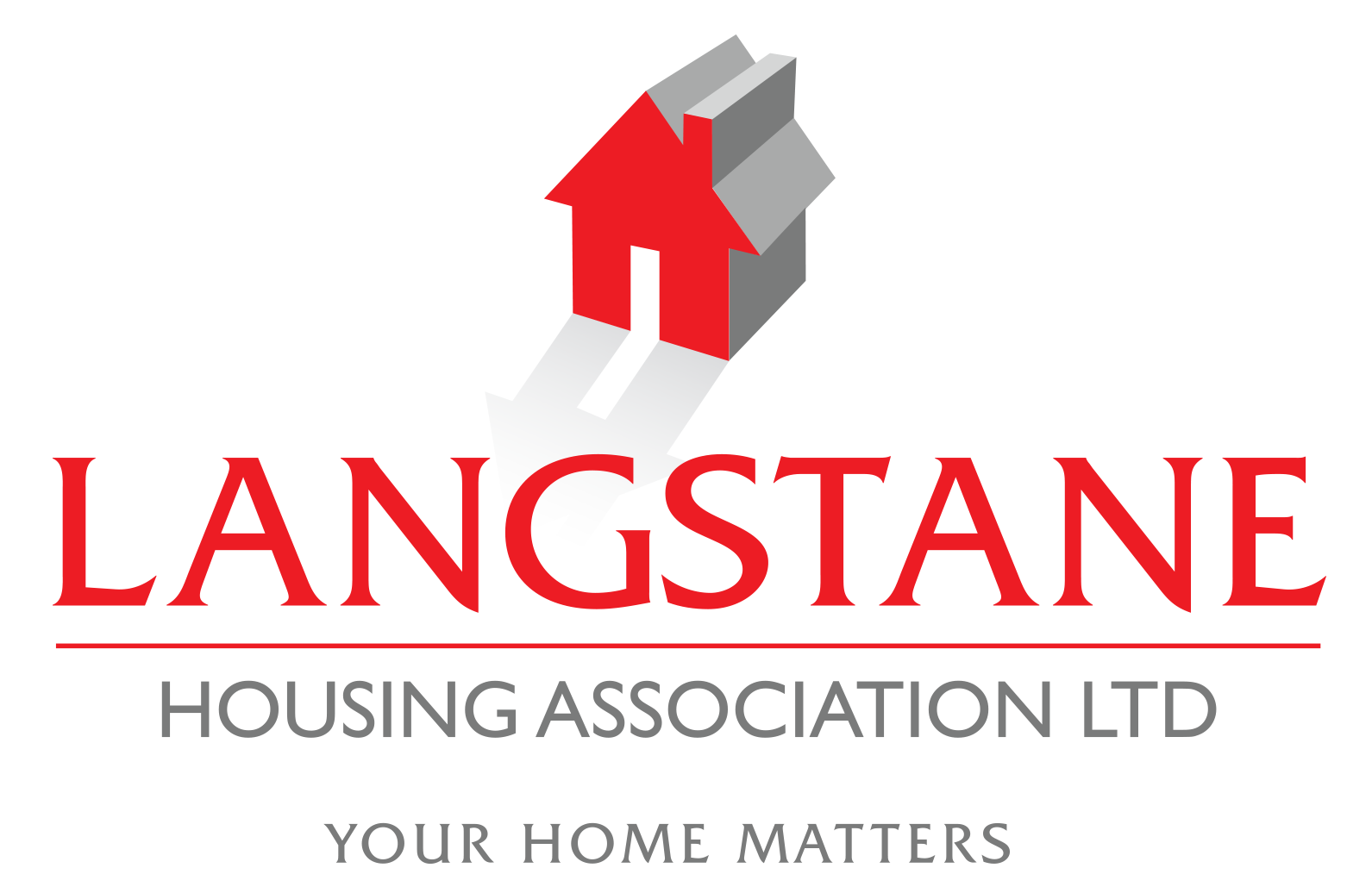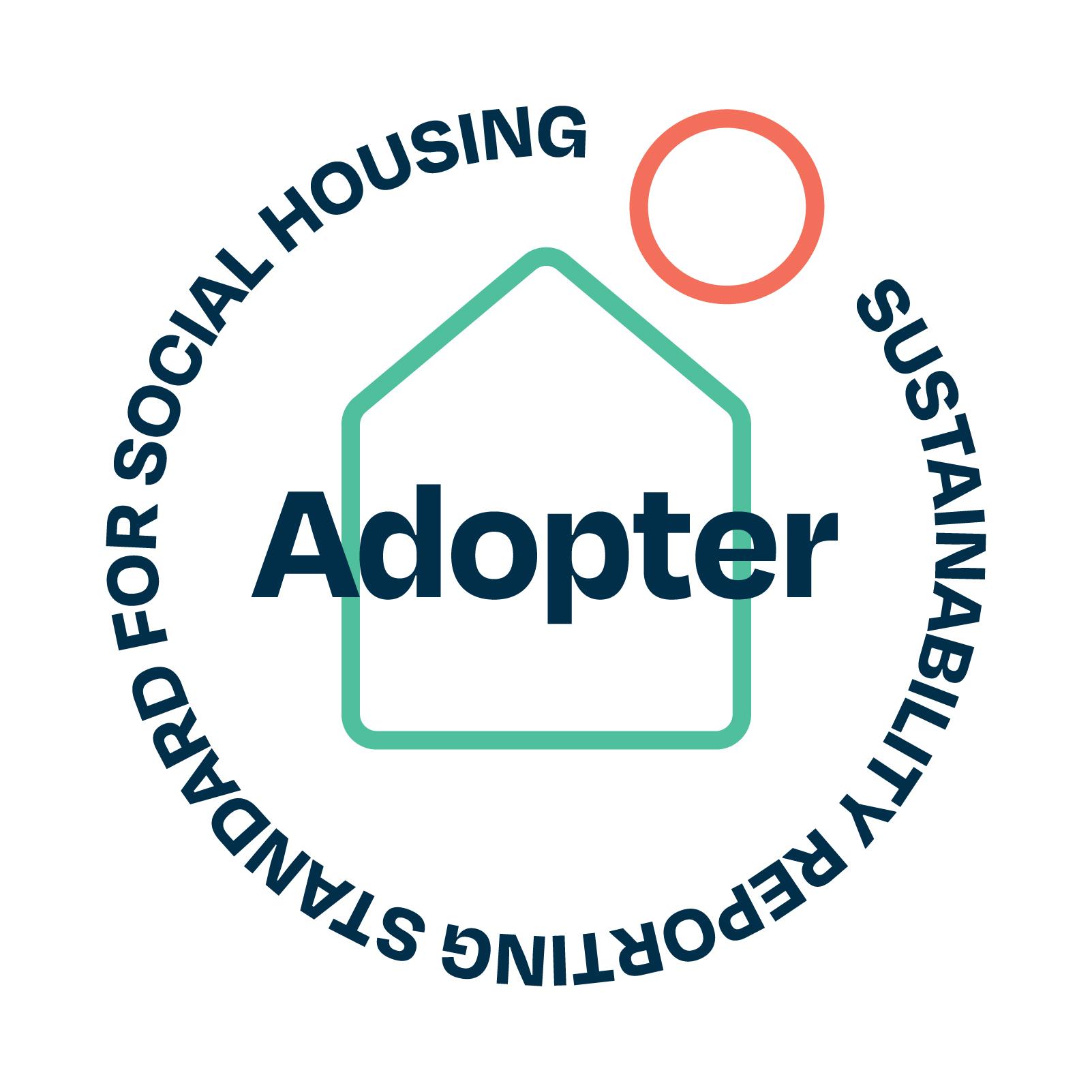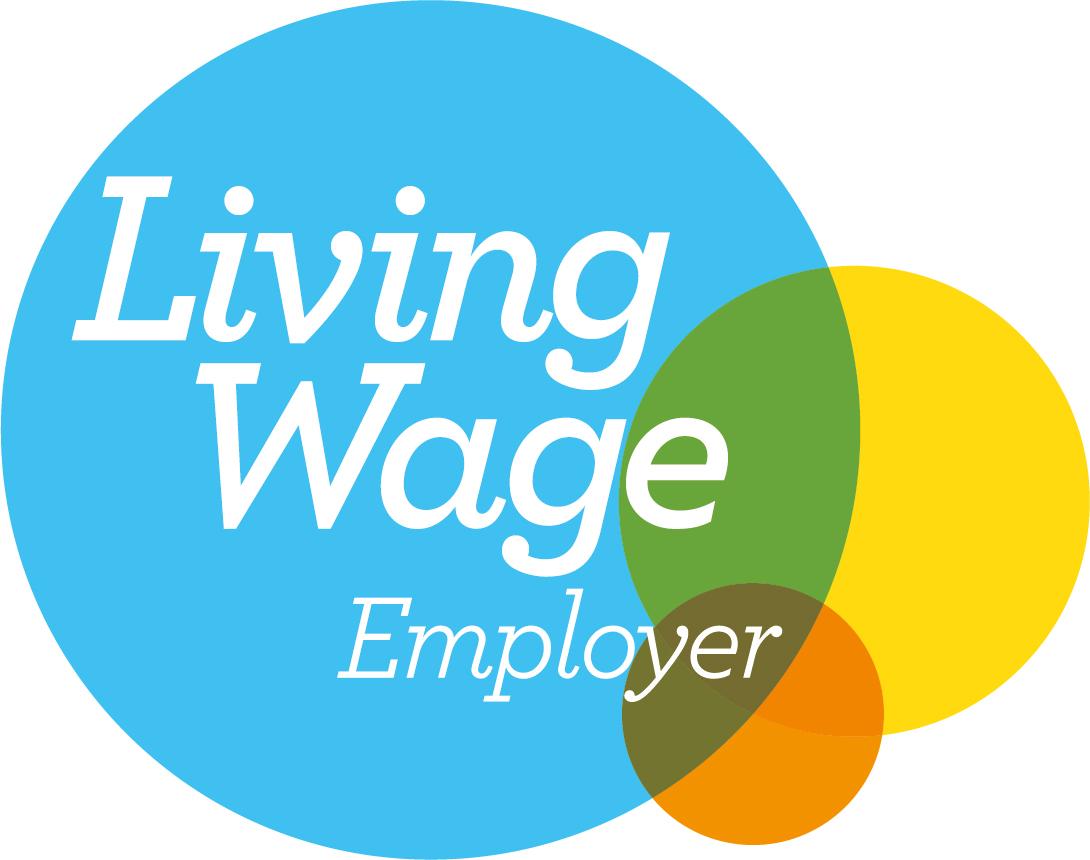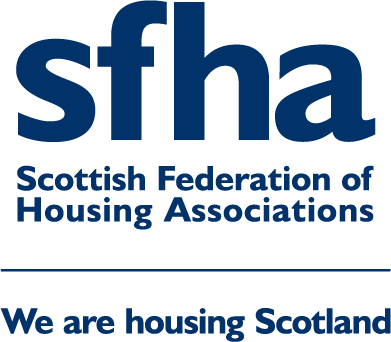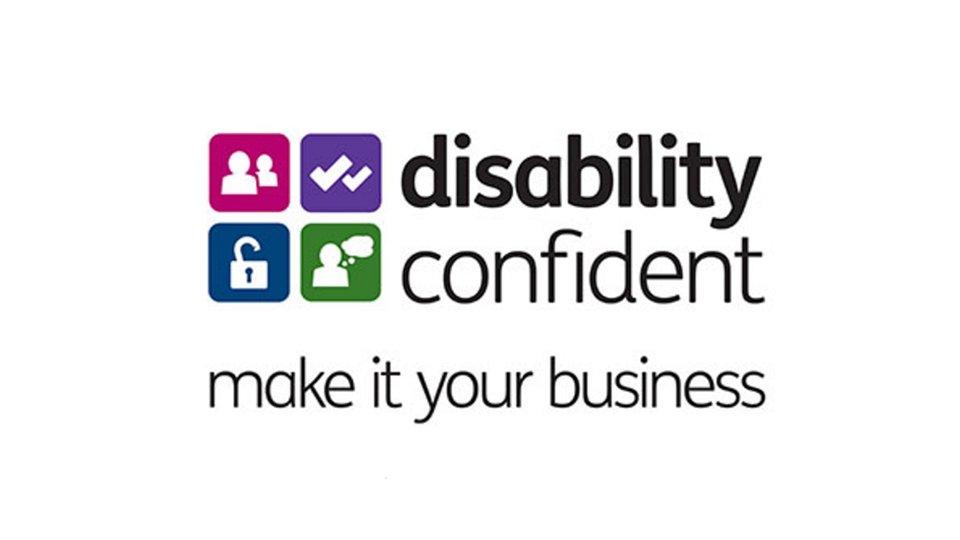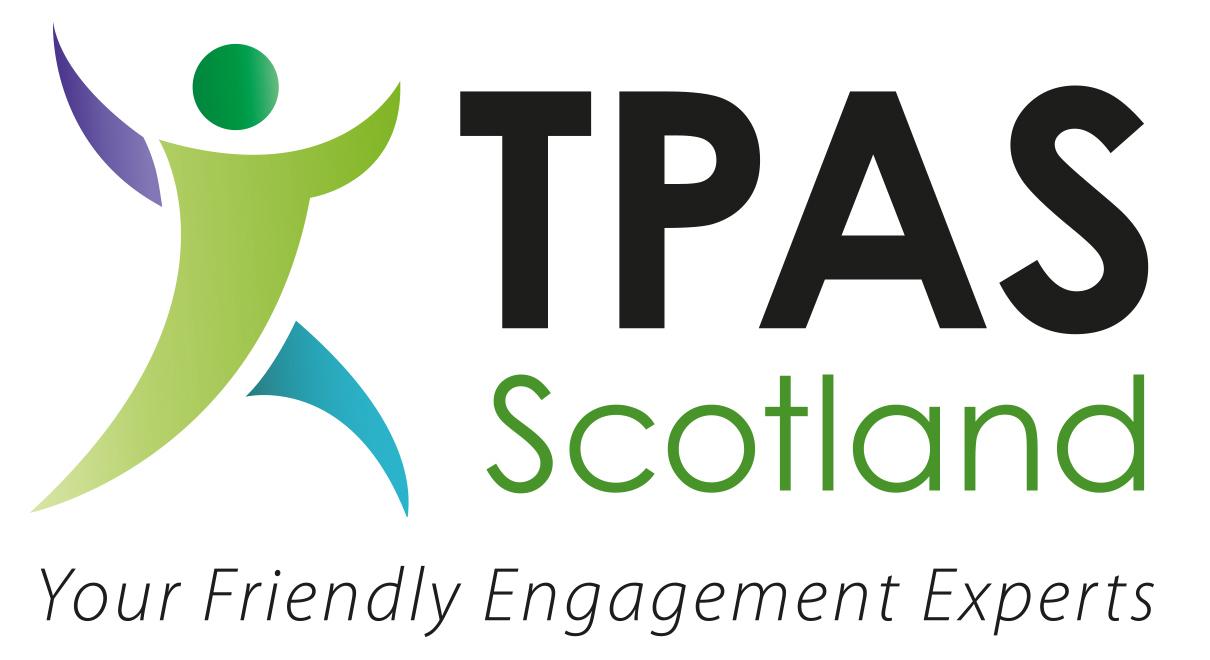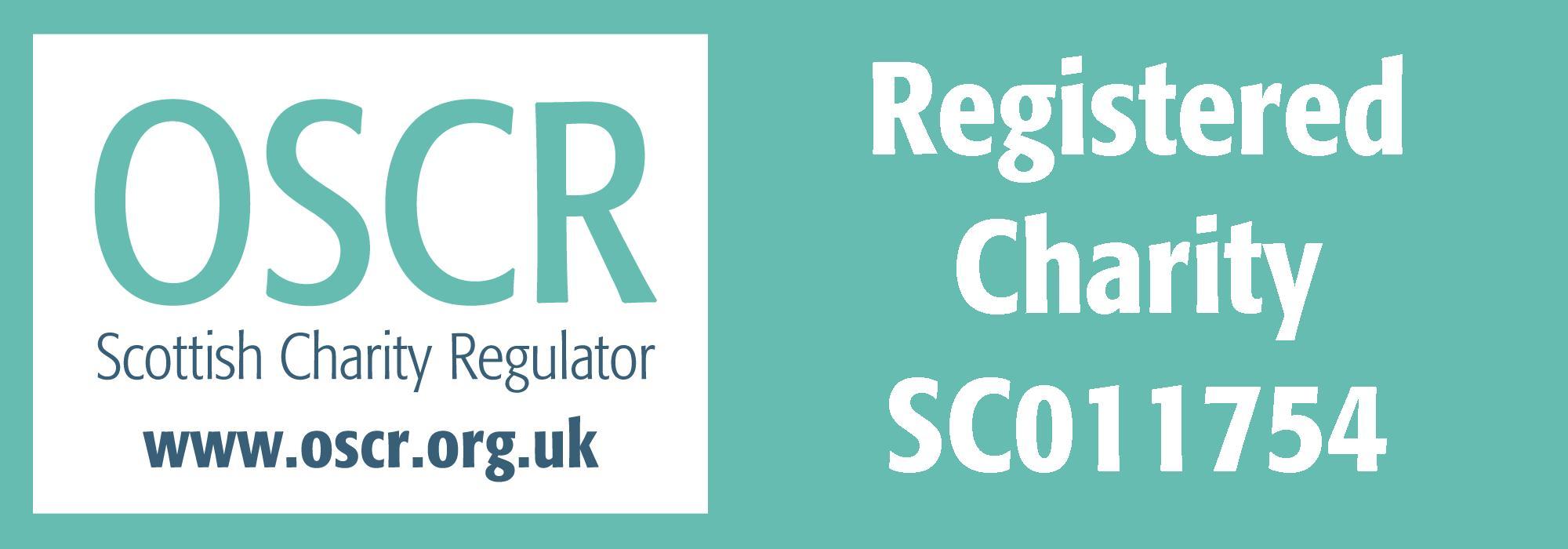What we do
We have upgraded all Langstane homes to meet the new standard required by the Scottish Government which means that all homes should now have:
- Smoke detection in the living area (or bedroom if a member of the household is bed bound)
- Smoke detection in the hall (at each floor level)
- Heat detection in the kitchen
- CO detection in any room with a carbon-fuelled appliance (eg gas boiler) or any room with a boiler flue passing through it
- All smoke detectors have to be ceiling mounted and interlinked so that if one detector sounds, they all sound
- We have also fitted homes with a ‘test’ switch which allows all detectors to be tested at once
If you don’t think your home has been upgraded or you have any questions about your smoke detection please get in touch. You can also check out our DIY Guides section for more information on how to test the detectors and locate which detector is sounding.
Smoke and CO detectors will be replaced every 10 years.
We are upgrading all communal areas with smoke detection to give tenants early warning should there ever be a fire in a communal area. The communal detectors will be tested regularly by the cleaning contractor. If the block isn’t serviced by the cleaning contractor then Langstane staff will test the detectors.
Communal alarms will be replaced every 10 years.
We have servicing plans for all fire safety equipment in communal areas to ensure they are functioning correctly and remain in good condition. Fire equipment includes:
- Emergency lights
- Smoke vent windows
- Dry risers
- Fire alarms
- Sprinkler systems
We have servicing plans for all fire safety equipment in communal areas to ensure they are functioning correctly and remain in good condition. Fire equipment includes:
- Emergency lights
- Smoke vent windows
- Dry risers
- Fire alarms
- Sprinkler systems
We have appointed an external fire risk assessor to carry out fire risk assessments for all our blocks of flats with a communal area. Fire risk assessments have been completed for all higher risk properties (6 storeys and over) and we are completing assessments for medium risk (4 and 5 storey properties) and lower risk (3 storeys and less) properties.
The fire risk assessments make recommendations on work that needs carried out in each block and we programme this work depending on priority, with essential work being carried out as soon as possible.
Good housekeeping in communal areas is essential to ensuring that escape routes are clear of clutter and that there are no flammable objects in communal areas that could be at risk of catching fire and poor housekeeping is one of the most commonly raised issues raised on our fire risk assessments.
Langstane has a ‘zero tolerance’ approach to belongings in communal areas – this means that staff will attempt to identify the owner of any belongings so that the owner has the opportunity to remove the items, and if the items are not removed or the owner cannot be located the belongings will be removed.
We believe good housekeeping is crucial. In the event of a fire, belongings in the escape routes could be trip hazard, especially if the hallways are dark or filled with smoke. Belongings include:
- Mobility scooters wheelchairs or walking frames
- Any recycling, waste or wheelie bins
- Clothes, shoes, boots, wellingtons
- Any electrical equipment
- Any exercise equipment
- Clothes drying equipment
- Gardening equipment
- Bikes (see exception below) and prams
- Children’s toys
- Furniture
- Curtains or blinds on communal windows
- Pictures or posters on communal walls
- Plants
- Carpets, rugs or runners (see exception below)
We do allow:
- Bicycles can be stored in common areas which have been fitted with bike hangers. These hangers ensure that bikes are kept secure and off the floor
- Door mats can be kept at the flat entrance but should have a non-slip backing and be around 40cm x 60cm.
What you can do
You should test your detectors once a week to ensure they are working properly. Every home has been fitted with a test button that makes testing the detectors simpler – just press the central button on the test switch and all the alarms on the system will be tested at the same time.
If your detectors sound, the test button can also be used to locate which detector has been triggered. If the alarms are sounding, press the central button once and an icon will illuminate to show whether it’s a heat, smoke or CO detector that has been triggered.
The system can also be silenced using the test button. Once you have identified which alarm is sounding, press the central button once more and the alarms will be silenced.
If the test shows a fault with your detectors, contact our Customer Service team on 01224 423000 and we will arrange a repair.
We are currently fitting fire evacuation procedure signage to all of our blocks of flats and you can see an example of our evacuation signage below:
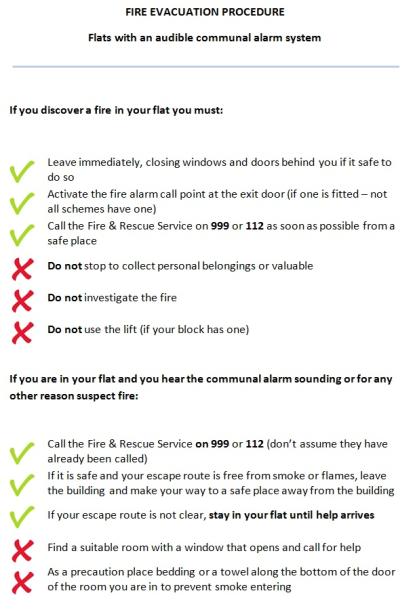
We have provided advice on evacuating blocks of flats but you should create your own plan for getting out of your home.
When creating your plan think about:
- Who’s usually at home?
- How will they know there’s a fire?
- If there’s children, who will help them? Children often sleep through alarms so it is important that someone wakes them.
- If there are elderly or disabled people in the home, who will tell them there’s a fire and who will help them?
- Where can you set up a safe meeting place away from the property?
Plan A should always be to escape through the main door of your home.
If the main door is blocked by the fire, think about what your Plan B will be.
- Is there another door to escape through?
- Could you climb out of a ground floor window?
If Plan A and B are not possible you might need to find a safe place in your home to wait for rescue. Make sure you know where the safe place will be:
• The safe place should have an opening window and a phone
• Keep a blanket or towels in the safe place to put around the door to keep out smoke
• Stay by the window and shout for help
Think about the quickest routes of your house if there was a fire in a particular room and make sure the whole family is aware of what to do.
Make sure the whole family knows the escape plan and practice it in advance.
You can request a free Home Fire Safety Visit from Scottish Fire and Rescue
It is very important that escape routes are kept clear of clutter. In the panic of an emergency, especially if its dark or smoky, belongings could be a trip hazard and slow down your escape.
Items that should not be stored in communal areas include:
- Mobility scooters wheelchairs or walking frames
- Any recycling, waste or wheelie bins
- Clothes, shoes, boots, wellingtons
- Any electrical equipment
- Any exercise equipment
- Clothes drying equipment
- Gardening equipment
- Bikes (see exception below) and prams
- Children’s toys
- Furniture
- Curtains or blinds on communal windows
- Pictures or posters on communal walls
- Plants
- Carpets, rugs or runners (see exception below)
Bicycles can be stored in common areas which have been fitted with bike hangers. These hangers ensure that bikes are kept secure and off the floor
Door mats can be kept at the flat entrance but should have a non-slip backing and be around 40cm x 60cm.
If you need to discuss the storage of items that don’t fit in your home (such as bikes or mobility scooters) contact our Customer Service team.
Your tenancy agreement highlights that flammable liquids or gases should not be stored in your home or communal areas. Items that might contain flammable liquids or gases include:
- Patio heaters or barbecues
- Paints or solvent based materials
- Gas heaters or pressurised containers
- Motorcycles / mopeds
- Petrol driven gardening equipment
- Portable generators
Our staff will identify any fire safety issues when they visit schemes but it is important that you let us know about any fire safety issues you notice in your scheme. Typical issues include:
- Poor housekeeping – items being stored in communal areas or fly tipping outside the building
- Broken emergency lighting
- Damaged smoke detectors
- Damaged fire signage
- Damaged fire doors – either communal or your own flat entrance door
- Damaged wall finishes in communal areas
Downloads
| File Description | File | Size |
|---|---|---|
| Gas Safety | 179KB | |
| Gas Safety Policy | 188KB | |
| Fire Safety Guide | 205KB | |
| Electrical Safety Guide | 255KB | |
| Legionnaires Disease Guide | 212KB | |
| Asbestos Guide | 170KB |
General Safety Tips
There are lots of things you can do to further reduce the risk of fire in your home:
Take care when cooking
More than half of accidental fires at home start in the kitchen. Take extra care when cooking with hot oil and don’t leave children alone in the kitchen when the hob or oven is on.
Take care with electrical appliances
- Try to keep to one plug per socket – too many electrical appliances plugged into one socket can overload it which can lead to overheating
- Electrical appliances, plugs and cables that are old or poorly wired can be a real danger. Check your appliances regularly for signs of damage.
Take care when smoking
Smoking is the biggest cause of fatal fires
- Make sure cigarettes are stubbed out fully
- Add water to the ashtray to ensure cigarette ends are fully out before emptying into a bin, preferably an outside bin
- Take extra care if smoking while tired or if you have been drinking alcohol or taking medication
- Never smoke in bed
